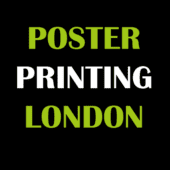How to Design an Effective Poster: A Comprehensive Guide
Posters are a versatile medium used for conveying information, promoting events, and sharing scientific research. Their visual appeal and concise content make them a powerful tool for communication. Designing an effective poster requires a balance of aesthetics and information. This article explores the essential elements of a successful poster and offers practical tips for creating one that stands out.
Essential Elements of a Poster
- Title and Headings
- Title: The title should be bold, clear, and concise. It is the first thing people notice, so it needs to grab attention and convey the poster’s main idea.
- Headings: Use headings and subheadings to organize content. They help guide the viewer through the information in a logical order.
- Content Layout
- Introduction: Briefly introduce the topic, problem, or objective.
- Main Body: Divide the main content into sections, such as methods, results, and discussion for scientific posters, or features and benefits for promotional posters.
- Conclusion: Summarize the key points or findings. Provide a call-to-action if relevant.
- Visuals
- Images and Graphics: High-quality images, charts, and graphs can make complex information easier to understand and more engaging.
- Color Scheme: Use a cohesive color scheme that aligns with the theme or branding. Avoid using too many colors, which can be distracting.
- Typography
- Fonts: Use easy-to-read fonts. The title should be in a larger font size, while body text should be smaller but readable from a distance.
- Hierarchy: Establish a clear hierarchy with font sizes and styles to differentiate between titles, subtitles, and body text.
- White Space
- Balance: Ensure there is enough white space to avoid clutter. White space helps to highlight the main elements and makes the poster easier to read.
- Contact Information
- Details: Include contact information or social media handles if viewers want to learn more or follow up.
Steps to Design a Poster
- Define Your Purpose and Audience
- Before you start designing, understand the purpose of your poster and who your target audience is. This will influence your design choices, including the type of content and visual style.
- Sketch a Layout
- Create a rough sketch of your poster layout. This helps in organizing your content and visual elements effectively before moving to digital tools.
- Choose the Right Software
- Use design software like Adobe Illustrator, Photoshop, or free tools like Canva. These tools offer templates and features that simplify the design process.
- Incorporate Visual Hierarchy
- Arrange elements to guide the viewer’s eye naturally from the title through the main content to the conclusion. Use size, color, and placement to create a visual hierarchy.
- Review and Revise
- Get feedback from others and make necessary revisions. Ensure that the text is error-free, visuals are high quality, and the overall design is coherent.
- Print and Display
- Choose a high-quality printer and appropriate paper size and type. Ensure the colors and elements are printed as intended.
Conclusion
Creating an effective poster involves thoughtful consideration of various design elements to communicate your message clearly and attractively. By focusing on a clear title, organized content, appealing visuals, and balanced white space, you can design a poster that stands out and effectively engages your audience. Whether for academic, promotional, or informational purposes, a well-designed poster can make a significant impact and effectively convey your message.
